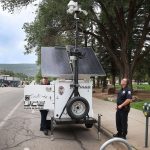
Chances are that if you are a Canon user looking to invest in a landscape lens for your EF mount camera, you’ve been eyeing the EF 16-35mm f/2.8L III USM. In this discussion, we’ll review the lens and find out if it’s an excellent lens to have in your camera bag.
There are a bunch of OEM as well as third-party lenses that you can look into. Canon’s EF 17-40mm f/4L USM and the EF 16-35mm f/4L IS USM are two genuinely good lenses that are great alternatives. There are third-party options as well. I have nothing against third-party lenses. But in my experience, I have noticed that these lenses often have sometimes inexplicable issues.
The 16-35mm is a great focal length, and I feel it makes more practical sense compared to something like the 11-24mm f/2.8. That lens can capture too much of the scene than you want to.
The lens features both Subwavelength and Air Sphere coating, which takes care of internal reflections, flares, and ghosting. These coatings do a great job of suppressing the effects of hard light, improving contrast and colors.
The lens has several weather seals around the lens’ vulnerable areas, including the focusing and the zoom rings. These are the main areas through which the lens ‘breathes’ and are susceptible to moisture and dust ingress. I recommend using a clear filter to ensure nothing passes through the front elements for the best results.
Optically the lens is very sharp wide open, and at the center of the frame. Sharpness drops a little when you explore the corners of the frame. However, one way to counter this issue is to drop the aperture to f/4. I feel that the EF 16-35mm f/2.8L III USM is a sharper lens at f/4 than the EF 16-35mm f/4L IS USM.
One area in which the lens does not match my expectations is image stabilization. For some inexplicable reasons, Canon hasn’t included image stabilization in this lens.
Now about the autofocusing performance of the lens. A ring-type ultrasonic motor powers the lens, resulting in a very smooth autofocusing performance for most parts. The lens comes with a full-time manual focusing override, which is standard for a lens of this quality. The lens has little to no focus breathing and should help videographers looking to use it for shooting videos with it.




